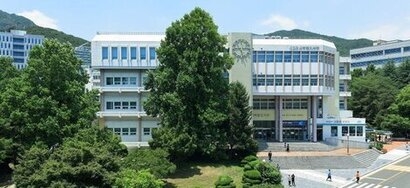
Lithium-sulfur batteries could become the next generation of rechargeable batteries, thanks to their theoretical high energy density and low cost. The Pusan National University scientists have solved the low-durability issue using a carbon-based coating material for the battery’s separator prepared using methylene blue, a widely available organic dye. Their findings could pave the way for unlocking the power of dyes in the energy storage field.
Many emerging technologies related to sustainable energy, such as grid-scale energy storage systems and electric cars, require high-performance rechargeable batteries. Unfortunately, conventional lithium-ion batteries (LIBs) have almost reached their theoretical limit, and need to be supplanted by batteries with higher theoretical capacity and energy density.
Lithium-sulfur (Li-S) batteries are regarded as the potentially best option for next-generation rechargeable batteries, due not only to their much higher energy density than LIBs but also to relatively lower costs, thanks to their use of sulfur, a widely abundant material. However, Li-S batteries suffer from a few key issues that need to be solved before they can become commercially viable, with the most prominent one being the “polysulfide shuttling effect.” This phenomenon causes long chains of sulphur to leak from the cathode over time, permanently degrading the capacity of the battery with each charge–discharge cycle.
In a recent study, the scientists found an efficient way to mitigate the shuttling effect and improve the performance of Li-S batteries. The paper originally became available online on September 29, 2021 and will be published in Volume 430 of Chemical Engineering Journal on February 15, 2022.
Led by Professor Seung Geol Lee, Assistant Professor Jin Hong Lee, and Associate Professor Oi Lun Li, the team developed an innovative approach involving the use of a common organic dye called methylene blue as a precursor for a novel coating material for the separator of Li-S batteries. The procedure involved dissolving the dye in aniline, a carbon-containing solvent, and subjecting the mixture to plasma engineering followed by heat treatment. This created a porous carbon material doped with both nitrogen and sulfur—two elements already present in methylene blue - that could be applied to the separator between the battery cathode and anode.
Thanks to the high heteroelement (element other than carbon) content (10%) of the doped carbon material obtained through this process, the polysulfide shuttling effect could be greatly mitigated, as the scientists demonstrated in various experiments. This, in turn, allowed them to produce more durable Li-S batteries with better electrochemical performances.
Overall, this study could motivate scientists worldwide to look into other potential applications of organic dyes outside textile dyeing.
“Our findings show that methylene blue, and possibly other dyes, can be useful in next-generation energy storage systems” said Professor Lee. “We expect our results to greatly contribute to the manufacturing of not only lithium-sulfur batteries but also various other energy storage systems such as sodium-ion batteries, in which carbon materials can be used.”
For additional information:

